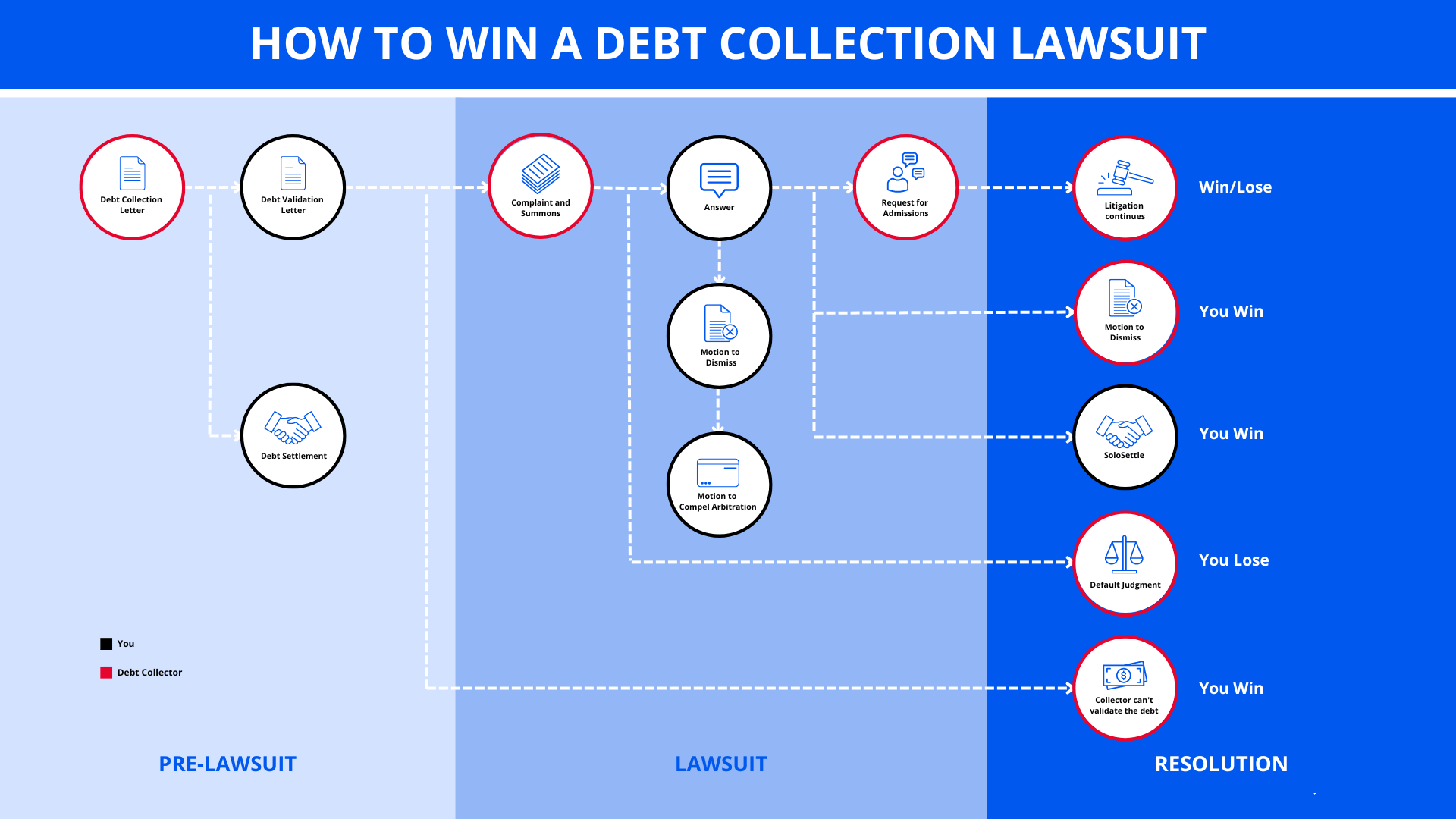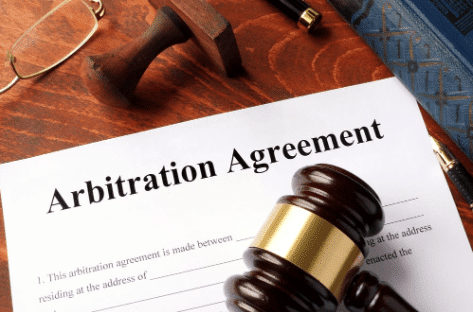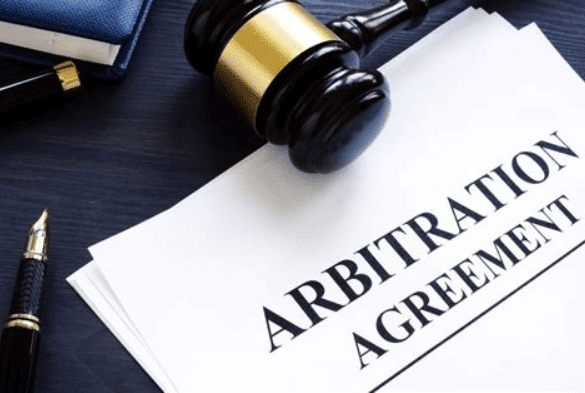To file a motion to compel arbitration in California without an attorney: Draft the motion with ZumaZip, establish a valid arbitration agreement, submit the motion with a $60 fee, and serve the opposing party. Arbitration can be cheaper and faster than litigation, with confidentiality benefits. California law generally supports arbitration agreements.
Arbitration clauses are widespread in construction contracts. The clauses require all disputed contract agreements to be submitted to arbitration instead of filing them in courts. The process is relatively cheaper compared to litigation and the numerous court procedures.
Arbitration also provides flexible options to the involved parties, leading to a faster dispute solution while allowing confidentiality between the parties involved. However, some parties may prefer traditional litigation whereby they can appeal the rulings and disputes presented in an open courtroom.
This way, the judges are aware that their decisions are being recorded for public reference. Therefore, some parties may decline to arbitrate their disputes before filing a case with the court of law directly, even with the availability of arbitration written agreements.
The party compelling the arbitration must establish a valid arbitration agreement while the arbitration opposing party provides evidence to defend itself. The trial court’s role is to sit as a fact trier to weigh any affidavits, declarations, and other available evidence to determine the arbitrability issue. Arbitration agreements are valid, irreversible, and the law courts impose them on the law and equity grounds.
Use ZumaZip to respond to debt collection lawsuits fast.
Make a Motion to Compel Arbitration.
Our Motion to Compel Arbitration is the best way to beat a credit card debt lawsuit. Many debt collectors will simply give up after receiving it.
Motion to Compel Arbitration process in California
The party compelling the arbitration establishes its demand for arbitration from the other party. The other party refuses to arbitrate as demanded by the California Code of Civil Procedure Section 1281.2.
When the petitioner alleges the arbitration agreement’s existence, the respondent must prove if the purported contract is false. If the respondent challenges the arbitration agreement’s existence, the petitioner will prove that the deal exists using any valid evidence.
The other party might have filed a court complaint already to allege the claims covered by the arbitration agreement. In that case, the party pursuing arbitration does not need to prove its demand for arbitration and the plaintiff’s refusal.
It is because the filed complaint effectively constitutes an arbitration refusal. Thirty days after being summoned, the claimant must file and serve a motion and notice to keep the action pending the arbitration of any doubt that is arbitrable under the agreement.
The doubt should be relevant to enforce the claim of lien. If the claimant fails to comply, there might be a waiver of the claimer’s right to compel arbitration.
Respond with ZumaZip and win in court.
How California courts deal with the Complaint
Legally, the respondent carries the burden of proving that the agreement is void. California underwriters constrain the court to interpret the arbitration agreement terms liberally. It ensures that the ruling given favors the arbitration.
The law courts do not give out waivers so easily. The party seeking a waiver must provide enough reasons why a waiver must be granted to it. There are no specific determinants for waivers as the court decides whether to give or not to give a waiver.
Like other federal laws, California law strongly favors the terms of the arbitration agreement. The law also conducts a thorough judicial investigation to parties claiming waivers.
When a party may fail to adhere to the arbitration terms, the California law will determine the existence of this disputed arbitration agreement. If the court finds out that the agreement is actual and legal, it will order both parties to adhere to the arbitration agreement.
When giving the verdict, the court first determines whether the petitioner and the respondent agreed to the dispute arbitration. The determination derives from the California contract law general principles. Since arbitration is like a contract, one party cannot pull the other to a dispute arbitration it did not agree to submit.
Failure to read the agreement and amendments terms carefully is not a reason to evade the arbitration.
Can the court nullify the arbitration?
The California court orders the parties not to arbitrate if:
- It determines that the petitioner has waived the right to compel arbitration
- There is an existence of grounds for the agreement revocation
- The petitioner (a state or a federal money lending institution) created the purported contractual relationship using fraud without the respondent’s consent and used the respondent’s identification details unlawfully
- A party in the arbitration agreement is also involved in another ongoing court action with a third party related to the conflict. However, this does not apply to dispute arbitration agreements for the professional negligence of health care providers
Litigation participation does not guarantee a waiver of the arbitration right. It would be illogical for a party participating in a lawsuit for contract breaching to request the court later to keep the litigation pending the arbitration.
The party seeking a waiver must prove that some detriment delayed the other party to seek arbitration. The court will allow arbitration provided the petitioner’s disagreements are not distinct from the disputed arbitration agreement. If the court orders for arbitration, it will ensure that the parties perform the agreement effectively.
File a response with ZumaZip and win your case.
Who pays for arbitration in California?
Arbitration can cost a pretty penny, but who is responsible for paying arbitration fees?
The arbitration clause states which party must pay for arbitration. In many cases, the debt collector is responsible for paying arbitration fees. To help consumers find out who must pay for arbitration, The Consumer Financial Protection Bureau has compiled a database of credit card agreements for all banks and credit cards in the US.
ZumaZip.com arbitration video explains how to search the arbitration clause to find out who pays for arbitration:
Example of arbitration in California
Hyundai Amco subcontracted with S3H to design and construct mechanical systems for installation in the Hyundai Motor America Incorporation headquarters in the United States. This contract had an arbitration and California choice-of-law provisions included.
However, during construction, after Hyundai Amco had paid some arrears for the contract, S3H dissolved its business and abandoned the agreement’s ligations. Hyundai Amco demanded S3H to settle the dispute through a written document as S3H had breached the contract.
Without further communications after that, Hyundai Amco filed a case against S3H in the Orange County Superior Court in California. Hyundai Amco took S3H to court for contract breach, conversion, concealment, intentional fraud, fraud with a false impression, equitable commutation, fraudulent transfer, and constructive trust.
The court denied S3H’s motion to compel the arbitration because S3H failed to assert Hyundai Amco refused its arbitration demand. However, the Court of Appeal overruled the verdict, reasoning that Hyundai Amco would have commenced arbitration proceedings as per the agreement instead of filing a lawsuit. This action affirmed Hyundai Amco’s refusal to arbitrate the dispute. This ruling has increased the number of successful motions to compel arbitration in various cases.
How to file a Motion in California
Here are some basic steps on filing a Motion in California:
- Draft the Motion. You can draft your own Motion to Compel Arbitration in minutes with ZumaZip.
- Pay the Motion filing fee, which is $60 in California.
- Submit the document to the court and opposing attorney. ZumaZip can also help with this step.
Check out California’s legal self-help site for more information on filing Motions.
Motion to Compel Arbitration sample
ZumaZip.com makes it easy to draft and file a Motion to Compel Arbitration. Check out ZumaZip sample of a Motion to Compel Arbitration to see if it’s a good fit for your needs.
Petition to compel arbitration in California
Some California courts may refer to the Motion to Compel Arbitration as a Petition to Compel Arbitration, but they mean the same thing. Even California’s Rule 3.1330 uses both titles, so don’t let the legal jargon confuse you.
What comes after a civil summons for debt collection?
The Summons is just the beginning. A series of documents can come after, and even before the Summons. The diagram below shows the possible paths of documents in a debt collection lawsuit.

ZumaZip.com can help you file many of these documents, including the Debt Validation, Answer, Motion to Compel Arbitration.
Filing a Motion to Compel Arbitration in lieu of an Answer
According to California’s rules of civil procedure, a defendant can file a Motion to Compel Arbitration instead of an Answer. However, if the motion (aka petition) is denied, the defendant will have 15 days from the denial to respond to the complaint with an Answer.
What happens in arbitration?
We wanted to learn more about the arbitration process and when to file a motion to compel arbitration in California, so we asked an attorney. Here are some helpful tips and tricks on arbitration from a debt lawyer:
- Filing a Motion to Compel Arbitration allows for the transition of a case from a traditional court setting to a private arbitration environment.
- Arbitration can be beneficial, especially if the arbitration costs for the creditor outweigh the value of the debt, which may sometimes lead to the dismissal of a debt lawsuit case.
- Arbitration can be expensive since the fees of the arbitrator are typically divided and shared by both involved parties.
- The arbitration process is similar to a court trial but is generally more informal and does not include the option of a jury.
- If you’re being sued for less than $30,000, arbitration might be a strategic option as the high costs of arbitration could discourage the creditor from pursuing the case.
- The terms of the contract are key in determining who bears the arbitration fees; if your contract stipulates that you are responsible for these costs, arbitration may not be the best option for you.
- Showing a clear intent to challenge the case can act as an incentive for creditors, often leading them to consider settling the matter outside of court.
- Debtors are capable of negotiating settlements for their debts without the aid of an attorney, provided they have a good understanding of their case.
What is ZumaZip?
ZumaZip is a convenient solution designed to streamline your response to a debt collection lawsuit. Here’s a breakdown of what you can expect when you use ZumaZip:
Firstly, you’ll access our user-friendly web application, which guides you through the process step by step. You’ll be prompted to answer a series of questions related to your specific situation. Once you’ve completed the questionnaire, you have the option to either print out the finalized forms and mail them to the appropriate courts yourself, or you can opt to utilize ZumaZip’s services to file them on your behalf. Additionally, if you choose this option, an attorney will review your document for added peace of mind.
If you’re seeking guidance on how to effectively respond to a debt collection lawsuit, ZumaZip can provide the assistance you need. Feel free to explore our FAQs for more information on what ZumaZip has to offer.
What if I haven’t been sued yet?
If you’ve only received a collections notice, but not a lawsuit, the best way to respond is with a Debt Validation Letter. When a debt collector contacts you in any way, whether it’s by phone or mail, you can respond by formally requesting a debt validation with a Debt Validation Letter . This letter notifies the collector that you dispute the debt and forces them to provide proof you owe the debt. They can’t call you or continue collecting until they provide validation of the debt. This flowchart shows how you can use a Debt Validation Letter to win.
Get started with a Debt Validation Letter here.
How to Answer a Summons for debt collection in all 50 states
Here’s a list of guides on how to respond to a debt collection lawsuit in each state:
- Alabama
- Alaska
- Arizona
- Arkansas
- California
- Colorado
- Connecticut
- Delaware
- Florida
- Georgia
- Hawaii
- Idaho
- Illinois
- Indiana
- Iowa
- Kansas
- Kentucky
- Louisiana
- Maine
- Maryland
- Massachusetts
- Michigan
- Minnesota
- Mississippi
- Missouri
- Montana
- Nebraska
- Nevada
- New Hampshire
- New Jersey
- New Mexico
- New York
- North Carolina
- North Dakota
- Ohio
- Oklahoma
- Oregon
- Pennsylvania
- Rhode Island
- South Carolina
- South Dakota
- Tennessee
- Texas
- Utah
- Vermont; Vermont (Small Claims court)
- Virginia
- Washington
- West Virginia
- Wisconsin
- Wyoming
Guides on how to beat every debt collector
Hey there! Facing off against a debt collector can feel like a daunting challenge, but fear not! We’re here to help you navigate through it all with our handy guides designed to assist you in beating every debt collector you encounter. Whether you’re facing a new lawsuit or dealing with a persistent collector, we’ve got your back. Stay positive, stay informed, and let’s tackle this together!
- Absolute Resolutions Investments LLC
- Accredited Collection Services
- Alliance One
- Amcol Clmbia
- American Recovery Service
- Asset Acceptance LLC
- Asset Recovery Solutions
- Associated Credit Services
- Autovest LLC
- Cach LLC
- Cavalry SPV I LLC
- Cerastes LLC
- Colinfobur
- Covington Credit
- Crown Asset Management
- CTC Debt Collector
- Cypress Financial Recoveries
- Delanor Kemper & Associates
- Eagle Loan of Ohio
- Educap
- Estate Information Services
- FIA Card Services
- Forster & Garbus
- Freshview Solutions
- Fulton Friedman & Gullace LLP
- Harvest Credit Management
- Howard Lee Schiff
- Hudson & Keyse LLC
- Integras Capital Recovery LLC
- Javitch Block
- Jefferson Capital Systems LLC
- LVNV Funding
- Mannbracken
- Mariner Finance
- Medicredit
- Michael J Adams PC
- Michael J Scott
- Midland Funding LLC
- Mullooly, Jeffrey, Rooney & Flynn
- Mountain Land Collections
- MRS Associates
- National Collegiate Trust
- Nationstar Foreclosure
- Northstar Capital Acquisition
- NCEP LLC
- NRC Collection Agency
- OneMain Financial
- Palisades Collection LLC
- Pallida LLC
- Paragon Revenue Group
- Pinnacle Collections Agency
- PMAB LLC
- Portfolio Recovery Associates
- Provest Law
- PYOD LLC
- Reunion Student Loan Finance Corporation
- Revenue Group
- Regents and Associates
- RSIEH
- Salander Enterprises LLC
- Second Round Sub LLC
- Security Credit Services
- Sherman Financial Group
- Suttell and Hammer
- T-Mobile
- Transworld Systems
- Tulsa Teachers Credit Union
- UCB Collection
- Velo Law Office
- Velocity Investments
- Waypoint Resource Group
- Weinberg and Associates
- Wolpoff & Abramson
Settle your medical debt
Having a health challenge is stressful, but dealing medical debt on top of it is overwhelming. Here are some resources on how to manage medical debt.
- Am I Responsible for My Spouse’s Medical Debt?
- Do I Need a Lawyer for Medical Bills?
- Do I Need a Lawyer to Fight Medical Bill Debt?
- Does Bankruptcy Clear Medical Debt?
- How Much Do Collection Agencies Pay for Medical Debt?
- How to Find Medical Debt Forgiveness Programs
- Is There a Statute of Limitations on Medical Bills?
- Medical Debt Statute of Limitations by State
- Summoned to Court for Medical Bills — What Do I Do?
- Summoned to Court for Medical Bills? What to Do Next
Stop calls from Debt Collectors
Do you keep getting calls from an unknown number, only to realize that it’s a debt collector on the other line? If you’ve been called by any of the following numbers, chances are you have collectors coming after you, and we’ll tell you how to stop them.
- 800-390-7584
- 800-289-8004
- 800-955-6600
- 877-366-0169
- 877-591-0747
- 800-278-2420
- 800-604-0064
- 800-846-6406
- 877-317-0948
- 888-899-4332
- 888-912-7925
- 202-367-9070
- 502-267-7522
Other wage garnishment resources
- Bank Account Garnishment and Liens in Texas
- Can I Stop Wage Garnishment?
- Can My Wife’s Bank Account Be Garnished for My Debt?
- Can Payday Loans Garnish Your Wages?
- Can pensions be garnished?
- Can Private Disability Payments Be Garnished?
- Can Social Security Disability Be Garnished?
- Can They Garnish Your Wages for Credit Card Debt?
- Can You Stop a Garnishment Once It Starts?
- Guide to Garnishment Limits by State
- How Can I Stop Wage Garnishments Immediately?
- How Long Before a Creditor Can Garnish Wages?
- How Long Does It Take to Get Garnished Wages Back?
- How to Fight a Wage Garnishment
- How to Prevent Wage Garnishment
- How to Stop a Garnishment
- How to Stop Social Security Wage Garnishment
- How to Stop Wage Garnishment — Everything You Need to Know
- New York Garnishment Laws – Overview
- Ohio Garnishment Laws — What They Say
- Wage Garnishment Lawyer
- What Is Wage Garnishment?
Guides on Arbitration
If the thought of going to court stresses you out, you’re not alone. Many Americans who are sued for credit card debt utilize a Motion to Compel Arbitration to push their case out of court and into arbitration.
Below are some resources on how to use an arbitration clause to your advantage and win a debt lawsuit.
- How Arbitration Works
- How to Find an Arbitration Clause in Your Credit Agreement
- How to Make a Motion to Compel Arbitration
- How to Make a Motion to Compel Arbitration in Florida
- How to Make a Motion to Compel Arbitration Without an Attorney
- How Credit Card Arbitration Works
- Motion to Compel Arbitration in California
- Sample Motion to Compel Arbitration
Federal Debt Collection Laws Can Protect You
Knowing your rights makes it easier to stand up for your rights. Below, we’ve compiled all our articles on federal debt collection laws that protect you from unfair practices.
- 15 USC 1692 Explained
- Does the Fair Credit Reporting Act Work in Florida?
- FDCPA Violations List
- How to File an FDCPA Complaint Against Your Debt Collector (Ultimate Guide)
- How to Make a Fair Debt Collection Practices Act Demand Letter
- How to Submit a Transunion Dispute
- How to Submit an Equifax Dispute
- How to Submit an Experian Dispute
- What Debt Collectors Cannot Do — FDCPA Explained
- What Does Account Information Disputed by Consumer Meets FCRA Requirements Mean?
- What does “meets FCRA requirements” mean?
- What does FCRA stand for?
- What is the Consumer Credit Protection Act
Resolve Your Debt with Your Creditor
Some creditors, banks, and lenders have an internal collections department. If they come after you for a debt, ZumaZip can still help you respond and resolve the debt. Here’s a list of guides on how to resolve debt with different creditors.
- American Express; American Express – Debt Collection
- Bank of America
- Barclay
- Best Buy Credit Card
- Capital One
- Chase
- Credit One Bank
- Old Navy Credit Card
- PayPal Synchrony Card
- Regional Finance
- Retailers National Bank
- Reunion Student Loan Finance Corporation
- SYNCB/PPEXTR
- Synchrony Bank
- Synchrony Walmart Card
- Target National Bank
- Webbank
- Wells Fargo
- Can I Pay My Original Creditor Instead of a Debt Collection Agency?
- Can I Settle a Debt with the Original Creditor?
Check the Status of Your Court Case
Don’t have time to go to your local courthouse to check the status of your case? We’ve created a guide on how to check the status of your case in every state, complete with online search tools and court directories.
- Alabama Court Case Search—Find Your Lawsuit
- Alaska Court Case Search — Find Your Lawsuit
- Arizona Court Case Search – Find Your Lawsuit
- Arkansas Court Case Search — Find Your Lawsuit
- California Court Case Search- Find Your Lawsuit
- Colorado Court Case Search — Find Your Lawsuit
- Connecticut Case Lookup — Find Your Court Case
- Delaware Court Case Search — Find Your Lawsuit
- Florida Court Case Search — Find Your Lawsuit
- Georgia Court Case Search — Find Your Lawsuit
- Hawaii Court Case Search — Find Your Lawsuit
- Idaho Court Case Search – Find Your Lawsuit
- Illinois Court Case Search — Find Your Lawsuit
- Indiana Court Case Search — Find Your Lawsuit
- Iowa Court Case Search — Find Your Lawsuit
- Kansas Court Case Search — Find Your Lawsuit
- Kentucky Court Case Search — Find Your Lawsuit
- Louisiana Court Case Search — Find Your Lawsuit
- Maine Court Case Search — Find Your Lawsuit
- Maryland Court Case Search — Find Your Lawsuit
- Massachusetts Court Case Search — Find Your Lawsuit
- Michigan Court Case Search — Find Your Lawsuit
- Minnesota Court Case Search — Find Your Lawsuit
- Mississippi Court Case Search — Find Your Lawsuit
- Missouri Court Case Search — Find Your Lawsuit
- Montana Court Case Search — Find Your Lawsuit
- Nebraska Court Case Search — Find Your Lawsuit
- Nevada Court Case Search — Find Your Lawsuit
- New Hampshire Court Case Search — Find Your Lawsuit
- New Jersey Court Case Search—Find Your Lawsuit
- New Mexico Court Case Search – Find Your Lawsuit
- New York Case Search — Find Your Lawsuit
- North Carolina Court Case Search — Find Your Lawsuit
- North Dakota Court Case Search — Find Your Lawsuit
- Ohio Court Case Search — Find Your Lawsuit
- Oklahoma Court Case Search — Find Your Lawsuit
- Oregon Court Case Search — Find Your Lawsuit
- Pennsylvania Court Case Search — Find Your Lawsuit
- Rhode Island Court Case Search — Find Your Lawsuit
- South Carolina Court Case Search — Find Your Lawsuit
- South Dakota Court Case Search — Find Your Lawsuit
- Tennessee Court Case Search — Find Your Lawsuit
- Texas Court Case Search — Find Your Lawsuit
- Utah Court Case Search — Find Your Lawsuit
- Vermont Court Case Search — Find Your Lawsuit
- Virginia Court Case Search — Find Your Lawsuit
- Washington Court Case Search — Find Your Lawsuit
- West Virginia Court Case Search — Find Your Lawsuit
- Wisconsin Court Case Search — Find Your Lawsuit
- Wyoming Court Case Search — Find Your Lawsuit






























